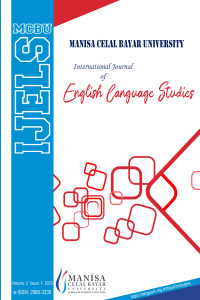Öz
Kaynakça
- Atwood, M. (1989). Cat’s Eye. Anchor Books.
- Berger, J. (2018). Ways of seeing. Routledge.
- Lorraine Radtke, H. (2017). Feminist theory in Feminism & Psychology [Part I]: Dealing with differences and negotiating the biological. Feminism & Psychology, 27(3), 357–377. https://doi.org/10.1177/0959353517714594
- Mussett, S. M. (2019). 'Simone de Beauvoir', in Giovanni Stanghellini, and others (eds), The Oxford Handbook of Phenomenological Psychopathology. https://doi.org/10.1093/oxfordhb/9780198803157.013.6
- Plath, S. (1981) edit. The Bell Jar. Bantam Books.
- Scull, A. (2009). Hysteria: The disturbing history. OUP Oxford.
- Tasca, C., Rapetti, M., Carta, M. G., & Fadda, B. (2012). Women and hysteria in the history of mental health. Clinical practice and epidemiology in mental health: CP & EMH, 8, 110.
- Waugh, P. (Ed.). (2006). Literary theory and criticism: An Oxford guide. Oxford University Press.
Discussion of Mental Illness, Violence, and Suicide and Their Effects on the Characters in the Cat’s Eye and The Bell Jar
Öz
Margaret Atwood’s Cat’s Eye and Sylvia Plath’s The Bell Jar can be discussed from various point of views especially gender division, alienation of women in the society and mental illnesses due to the set of rules that are being oppressed on women. Atwood argues that, in the male-dominated world of work, women are not given a place and are always reduced to the second sex, unable to have equal rights, find a job and receive equal pay in the fields they work. Furthermore, in her novel, Plath shows the alienation of Esther and how she slowly develops mental illnesses due to the specific reasons stated above. Moreover, physical and mental violence perpetrated by women against each other comes to the foreground turning the struggles into mental illnesses in both of the novels. In spite of this, Simone De Beauvoir studies and states that gender division is seen throughout the history and reduction of women to a second sex is being put together by various disciplines. Turning back to the era that the novels are based on, the characters live in a society after World War II and this paper states the effects of the time period on women’s lives presenting their struggle and mental health in the 1950s and 1980s. This paper sheds light on the social life of women and their roles, how they have oppression, being reduced to the second sex and gender equality. This paper analyses the issues in terms of psychoanalytic feminism and gender equality.
Anahtar Kelimeler
Feminist theory Psychoanalytic feminism Gender equality Mental illness Roles of women
Kaynakça
- Atwood, M. (1989). Cat’s Eye. Anchor Books.
- Berger, J. (2018). Ways of seeing. Routledge.
- Lorraine Radtke, H. (2017). Feminist theory in Feminism & Psychology [Part I]: Dealing with differences and negotiating the biological. Feminism & Psychology, 27(3), 357–377. https://doi.org/10.1177/0959353517714594
- Mussett, S. M. (2019). 'Simone de Beauvoir', in Giovanni Stanghellini, and others (eds), The Oxford Handbook of Phenomenological Psychopathology. https://doi.org/10.1093/oxfordhb/9780198803157.013.6
- Plath, S. (1981) edit. The Bell Jar. Bantam Books.
- Scull, A. (2009). Hysteria: The disturbing history. OUP Oxford.
- Tasca, C., Rapetti, M., Carta, M. G., & Fadda, B. (2012). Women and hysteria in the history of mental health. Clinical practice and epidemiology in mental health: CP & EMH, 8, 110.
- Waugh, P. (Ed.). (2006). Literary theory and criticism: An Oxford guide. Oxford University Press.
Ayrıntılar
| Birincil Dil | İngilizce |
|---|---|
| Konular | İngiliz ve İrlanda Dili, Edebiyatı ve Kültürü |
| Bölüm | Research Article |
| Yazarlar | |
| Yayımlanma Tarihi | 31 Aralık 2023 |
| Yayımlandığı Sayı | Yıl 2023 Cilt: 2 Sayı: 1 |


